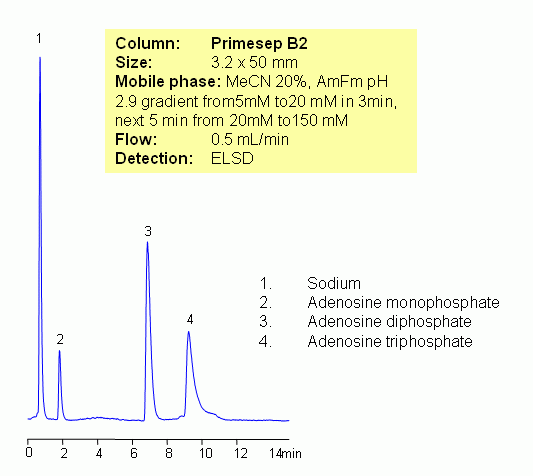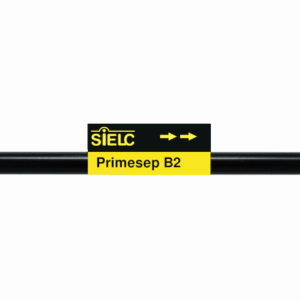
Adenosine mono-, di and triphosphate are hydrophilic nucleotides which serve as building blocks of DNA and RNA. Each molecule consists of phosphate or phosphate groups, adenine and sugar ribose. Molecules are hydrophilic and lack a retention mechanism on traditional reversed-phase column. Three nucleotides were retained and separated on Primesep B2 reversed-phase anion-exchange column. retention time is controlled by buffer concentration and buffer pH. ADP and ATP require higher concentration of buffer to facilitate elution. Method can be used for LC/MS analysis of different nucleotides in various sample matrices (biofluids, plasma, blood, urine). Other detection techniques can be used for analysis. Method is reliable and robust and can tolerate interference from sample matrix. Additional sample preparation might be required.
| Column | Primesep B2, 3.2×50 mm, 5 µm, 100A |
| Mobile Phase | MeCN/H2O – 20/80% |
| Buffer | AmFm pH 2.9- 5-20 mM 3 min, 20-150 mM |
| Flow Rate | 0.5 ml/min |
| Detection | ELSD |
| Class of Compounds |
Nucleotide, Hydrophilic, Ionizable |
| Analyzing Compounds | Adenosine Monophosphate, Adenosine Diphosphate, Adenosine Triphosphate |
Application Column
Primesep B2
The Primesep family of mixed-mode columns offers a wide variety of stationary phases, boasting unprecedented selectivity in the separation of a broad array of chemical compounds across multiple applications. Corresponding Primesep guard columns, available with all stationary phases, do not require holders. SIELC provides a method development service available to all customers. Inquire about our specially-tailored custom LC-phases for specific separations.
Select optionsAdenosine Monophosphate
Adenosine Triphosphate





